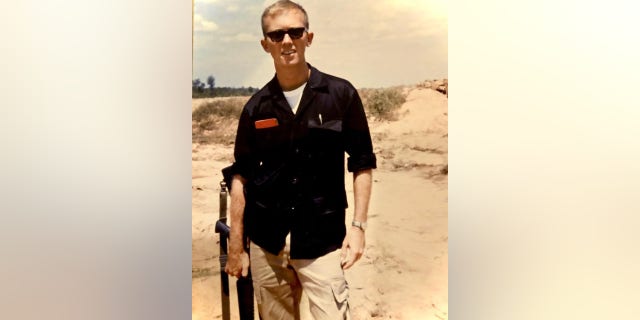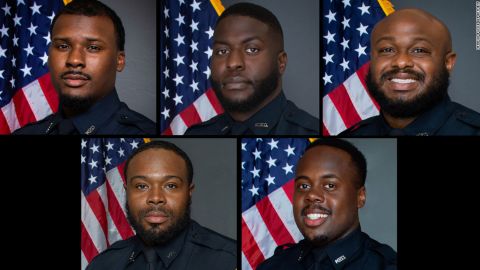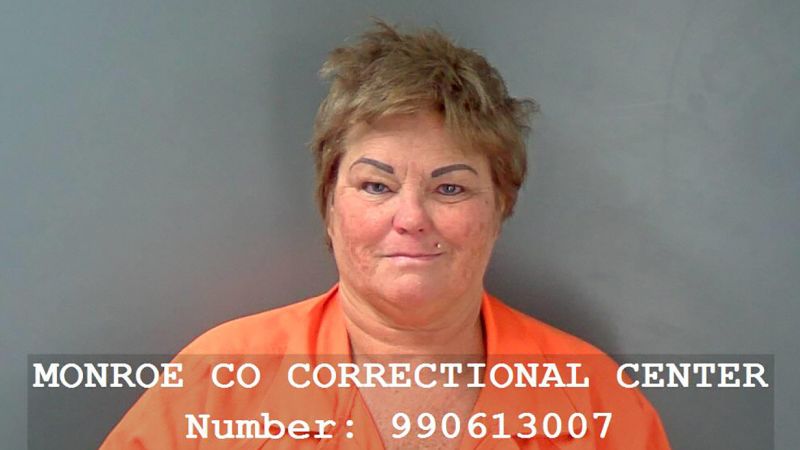NEWYou can now listen to Fox News articles!
Hundreds of people sailed through my life during three decades at The Washington Post, but none matched the impact that Bob Andrews had on me.
Bob died December 2, from Parkinson’s, silencing a man whom hundreds of others — from the jungles of Southeast Asia to the mountains of Afghanistan — could not. He was 85.
From the moment he ambled up behind me two short years ago outside my gym in Washington’s west end, I sensed a force field around him. Here was a real spy, a highly decorated soldier who fought in wildernesses, jumped out of airplanes, wrote novels and military textbooks, sealed business deals, knew presidents and sheiks, advised former astronauts and rained horror down on bad guys.
Bob published three spy novels, including one published in 1993 titled “Death in a Promised Land.” That was followed by three mysteries built around a pair of Washington, D.C. homicide detectives. Film director Spike Lee has agreed to buy the movie rights to “Death in a Promised Land.” It is a modern-day exploration of unanswered questions surrounding the assassination of Martin Luther King, Jr.

Bob Andrews was highly decorated in the service of his country, including the bronze star and the medal for Distinguished Civilian Service to the United States Army.
Bob also authored a thesis about his counter-insurgency work in Vietnam, which was published as “The Village War” and is a text used at the National War College in Washington.
“My dad led a big life,” said his daughter, Elizabeth, in an understatement. Bob was a character right from a Daniel Silva thriller.
Never in our conversations did Bob mention his numerous decorations. Maybe because it would have taken too long. He earned the bronze star, the air medal, the army meritorious service medal, the company infantry badge, the master parachutist badge and the special forces tab. The Republic of Vietnam awarded him the gallantry cross first class. He was awarded the Department of Defense Award for Outstanding Public Service in 2007 and the medal for Distinguished Civilian Service to the United States Army.
My reporting instincts flashed “Man of consequence … Accept!” when this total stranger offered me a ride in the souped-up Mini Cooper convertible I was admiring outside our gym. “Get in. Let’s go for a ride. You wanna drive?”
I accepted. And off we went.
I learned he once inhabited the hazy netherworld between the polished Washington noggins who formulated policy and the on-the-ground specialists who erase our enemies.
“The breadth of his national security experience was rare,” said Pete Geren, who was Bob’s boss when Geren served as secretary of the army under President George W. Bush and during the early months of the Obama administration. “Few people had experience in intel and on the ground in the field and in counterinsurgency. He knew that side of war.”
Bob was trained as an engineer, graduating from the University of Florida and subsequently joining the army as a second lieutenant. He dove into covert operations during his first tour of Vietnam as part of a unit that conducted long-range reconnaissance missions along the borders of Laos and Cambodia and other unconventional operations in Southeast Asia.

Director Spike Lee has agreed to buy the rights to ‘Death in a Promised Land,’ a modern-day exploration of questions surrounding the assassination of Martin Luther King, Jr.
(Vittorio Zunino Celotto/Getty Images for Kering)
His second tour was as a Green Beret. Before he left the army after 20 years, he had a master’s degree in Asian Studies from Northeast Missouri State University, since renamed Truman State University, and had served the 82nd Airborne Division at Fort Bragg.
After he did his 20, he went to the CIA where he spent time in Southeast Asian Ops before moving over to legislative affairs. The CIA gave way to many years as Ohio Democrat Sen. John Glenn’s military adviser.
He was summoned back to duty on 9/11, when Bush appointed him principal deputy assistant secretary of defense for special operations.
Bob served in a variety of Pentagon roles, including counterintelligence, special operations and special assistant to Geren. His Vietnam experience had taught him the limits of technology over tribal loyalty as he directed the 5th Special Forces Group into Afghanistan.

Bob Andrews traveled all over the world for his country both fighting America’s enemies and advising our leaders.
He had been raised in a civilized society that breathed order, yet readily adapted to disorder when the job required.
“He could talk about high-level stuff with Harvard PhDs,” said Shephard Hill, a longtime friend and colleague. “He was also the only guy at the table with policy wonks who had held a gun, jumped out of an airplane, shot people and crawled through the jungle. He could bring those details to the discussions from a soldier’s level because he had lived it.”
Bob was tough. He ran multiple marathons. He was training for one in 1978 when he was hit by a truck at Hains Point in D.C., shattering his pelvis and damaging his back. But he ran several more marathons after he recovered.
He didn’t blink an eye when one August Friday he ordered the shutdown of a critical missile parts factory for noncompliance with security regulations, startling Pentagon brass and corporate bigwigs, Geren said. The problem was fixed by the following Monday.
“Bob had read news reports of mold in the barracks at Fort Sill, Okla.,” Geren said. “Bob said ‘Let’s get a plane and get out there. The soldiers and their families need to meet face-to-face with the secretary of the army.’”
Geren said Bob taught him important management lessons.
“Bob had read news reports of mold in the barracks at Fort Sill, Okla.,” Geren said. “Bob said ‘Let’s get a plane and get out there. The soldiers and their families need to meet face-to-face with the secretary of the army.’”
Instead of going through the chain of command and following the normal procedure of ordering an investigation from the top down, Bob advised Geren that when it comes to soldiers’ health and welfare, you start at the bottom where the soldiers live.
“I called my chief of staff, requested a plane, and we flew to Sill the next morning,” Geren said. “We met with the soldiers who lived in the barracks, the commanding officer, viewed the mold firsthand, committed to fix the problem and we did.”
Bob was an extrovert. “He loved talking to people,” Elizabeth said. “He made friends with everyone from the bartender at Martin’s Tavern to the homeless guy who lives in Solomon’s Alley. He thought everyone had a story and he loved to hear them.”
Bob was a patriot. “As a kid, I rode in the back of a station wagon where dad was always leading us in songs like ‘God Bless America’ and ‘This Land Is Your Land,’” said daughter Elizabeth.
CLICK HERE TO GET THE OPINION NEWSLETTER
Bob was humble. “He would sit and listen in meetings,” Geren said. “Offer an occasional comment. But when it was over, he would go to his boss and tell him this is what we should do.”
One of our last lunches was at Martin’s Tavern on Aug. 6, 2021. The meeting was preceded a few weeks earlier by a gloomy message regarding the advancing Parkinson’s disease: “PD has (finally) been asserting itself,” his email said.
“He could talk about high-level stuff with Harvard PhDs,” said Shephard Hill, a longtime friend and colleague. “He was also the only guy at the table with policy wonks who had held a gun, jumped out of an airplane, shot people and crawled through the jungle. He could bring those details to the discussions from a soldier’s level because he had lived it.”
Bob was understandably distracted that summer day. I noticed a vulnerability for the first time since we had met. I felt terribly sad, but I also was proud to be in the company of such an accomplished person at a most sensitive time in his life. We continued to communicate over the next few months, but the interactions were less frequent.
CLICK HERE TO GET THE FOX NEWS APP
“Parkinson’s gaining a bit, but not without a fight,” he wrote. “New doctor joining my merry band tomorrow. Feeble though they be, you’re in my prayers. Best, Bob”
Our final email exchange occurred on Nov. 5, 2021, when I asked Bob how he was feeling and told him he was in my prayers. Following is his reply: “S.A.S., Tom. (Still.Above.Sod.) Stolen from F.B. Morse. The respite increasingly less enjoyable, but always brightened by incoming traffic. Thanks, Bob.”
No, thank you, Bob.
CLICK HERE TO READ MORE FROM THOMAS HEATH
















